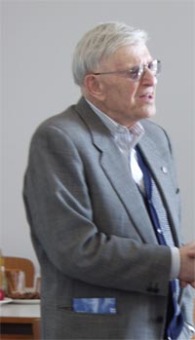Siegfried Halbreich (*1909)

© Eva & Artur Holling
“And more and more we felt united and a measure of strength emerged. We wanted to do our best to help ease the suffering of the patients and improve ourselves and the situation. This became our purpose – no one could stop us from caring.”[1]
Siegfried Halbreich was born on April 13, 1909, in Dziedzitz, Silesia (today: Czechowice-Dziedzice, Poland). He had three siblings and lived in his grandparents’ home until his fourth year of life. The children were intentionally given a Jewish upbringing; they went to Jewish religion classes and belonged to Blau-Weiss, a Zionist youth organization.
Siegfried Halbreich actually wanted to study medicine, but his family was unable to finance his studies, and he began training as a pharmacist in 1928. In the fall of 1930, he was drafted into the Polish army, where he was increasingly confronted with anti-Semitism. After his discharge, he moved to Kraków und studied pharmacy. From 1935 on, he worked for a chemical company in Katowice and was a member of Akiba, a Zionist organization.
After the German invasion of Poland on September 1, 1939, Siegfried Halbreich knew that he could not stay in Poland any longer, and he tried to emigrate to Palestine. At the Austrian-Yugoslav border, he was handed over to the Gestapo by an “ethnic German” Yugoslav border official. In November 1939, he was deported to Sachsenhausen and forced to work there in a carpentry work detachment. In September 1941, Siegfried Halbreich was placed in the Gross-Rosen concentration camp, where he had to work in the quarry. In October 1942, he was deported to Auschwitz and sent to the Buna/Monowitz concentration camp, where he became a male nurse in the infirmary. In late February 1943, Siegfried Halbreich was assigned to set up and maintain an out-patient treatment site for forced laborers in the Monowitz work education camp (Arbeitserziehungslager). There he shared a room with the camp elder, Rudi Kahn, and after Kahn’s escape he himself became camp elder. This position enabled Siegfried Halbreich to protect other prisoners from selections, make contact with British POWs, and limit the brutality of the block elders and Kapos.
On January 18, 1945, Siegfried Halbreich was forced to take part in the death march. He ended up working in the hospital barracks at the Boelke-Kaserne, a subcamp of Nordhausen. When Nordhausen was bombed in April 1945, he managed to escape and find a place to hide. When he returned on April 13, the camp already had been liberated by the U.S. Army.
Siegfried Halbreich worked next for the U.S. Army, helping to find and identify members of the SS. During this time, he met Ruth Kramarz, who was a DP in Mittelbau-Dora. They married on March 31, 1946, in Frankfurt am Main, and emigrated to the United States in June. Siegfried Halbreich had various jobs there until he and his wife opened a business of their own in Los Angeles, where they still live today.
(LG; transl. KL)
















